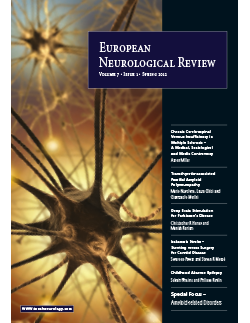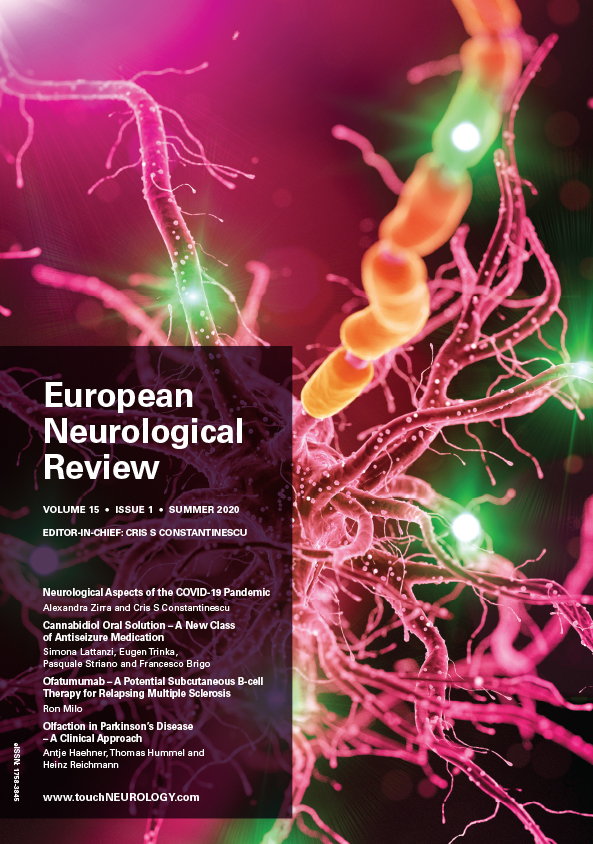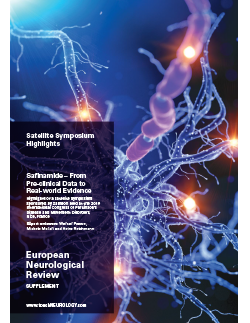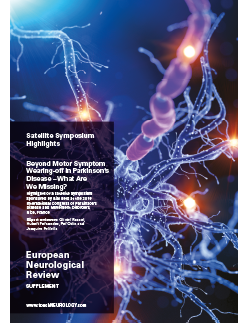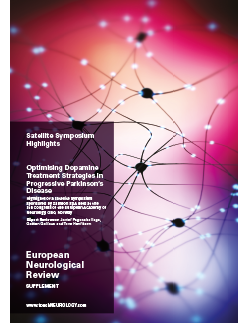EUROPEAN NEUROLOGICAL REVIEW – VOLUME 7 ISSUE 1 – SPRING 2012
Iam delighted to have been invited to write the foreword for this issue of European Neurological Review, especially in the 20th anniversary year of the European Parkinson’s Disease Association (EPDA). Twenty years ago, the concept of a united Europe was very much at the forefront of people’s minds and this continues to be the case […]
Editorial
Beginning with the publication of a paper by Paolo Zamboni in 20091 that claimed an association between a number of cerebral venous ‘abnormalities’ and multiple sclerosis (MS), the international MS community has been embroiled in a debate, unprecedented in scope and controversy. The original Zamboni paper defined ‘chronic cerebrospinal venous insufficiency’ (CCSVI) as the presence […]
Special Focus – Amyloid-related Disorders
Amyloidoses encompass a heterogeneous group of disorders characterised by the accumulation and extracellular deposition of insoluble aggregates of misfolded fibrillar proteins termed amyloid, which can lead to tissue damage and organ dysfunction.1 They can be exceptionally rare or rather frequent, acquired or hereditary, localised or systemic, quite indolent or life-threatening. Amyloidoses are classified based on […]
Cerebral congophilic or amyloid angiopathy (CAA) is a clinicopathological entity that has been recognised since the early part of the 20th century.1 It is now considered a common cause of primary non-traumatic brain haemorrhage and traditionally it was described in elderly patients who were thought to be normotensive. Because of its frequent association with Alzheimer’s […]
This article examines the possible involvement of nutrients in the pathogenesis, prevention, or management of Alzheimer’s disease (AD). Nutrients are defined here as food constituents that are essential for preventing or treating the clinical syndromes that develop when they are deficient. In general, they act as substrates or co-factors for enzymes and thereby sustain growth […]
Movement Disorders
Any surgical procedure requires two things to be successful: selecting the correct patient and performing the operation correctly. The various operations of deep brain stimulation (DBS) for Parkinson’s disease (PD) are not particularly difficult. They comprise a series of steps that must be performed in an appropriate sequence and can be learned by most neurosurgeons […]
The degeneration of the dopaminergic nigrostriatal system and parkinsonism (rest tremor, rigidity, bradykinesia and postural instability/gait disorder) represent only one aspect of Parkinson’s disease (PD), a multifaceted and complex disorder.1 In addition to this typical motor dysfunction, non-motor symptoms (NMS) also significantly reduce of quality of life.2–4 Several non-motor features are associated with deficits in […]
Stroke
The purpose of this article is twofold: first, to review the studies comparing carotid endarterectomy (CEA) with medical treatment to help decide who should undergo revascularisation; and secondly, to review studies comparing carotid angioplasty and stenting (CAS) versus CEA to see how they should be revascularised. Extracranial internal carotid artery stenosis is a leading cause […]
Multiple Sclerosis
Multiple sclerosis (MS) specialist nurses are pivotal members of the multidisciplinary team, all having varying responsibilities such as symptom management, drug initiation and drug monitoring in people with MS. During the past two decades the role of MS nurses has evolved owing to expanding management strategies and new approaches to MS treatment. They are now […]
Neuromuscular Disorders
Lambert–Eaton myasthenic syndrome (LEMS) is a rare neuromuscular disorder affecting around 1/100,000 people in Europe, although because it may go undiagnosed in many patients, its true prevalence may be considerably higher.1 LEMS results from insufficient synaptic release of acetylcholine, which disrupts peripheral cholinergic neurotransmission. This is caused by autoimmune antibodies directed against the P/Q-type voltage-gated […]
Epilepsy
Childhood absence epilepsy (CAE) is one of the most common forms of paediatric epilepsy, accounting for between 10 and 17 % of all cases of childhood onset epilepsies.1 CAE is defined by age-related onset, clinical and electrographical characteristics, and a presumed genetic aetiology.2 The syndrome typically begins at between four and eight years of age […]
People with epilepsy have a two- to threefold increased mortality1 and are 24 times more likely to die of sudden death compared with the general population.2 Although injuries associated with seizures, suicides, adverse effects of medications and the underlying aetiology of the epilepsy contribute to this increased mortality, sudden unexpected death in epilepsy (SUDEP) is […]
Pain
Neuropathic Pain Definition, Diagnosis and Clinical Presentation
Surgical Imaging
The goal of glioma surgery is to maximize tumor resection while preventing a new post-operative neurologic deficit. For both low- and high-grade gliomas, increased extent of resection correlates with improved progression-free survival as well as with overall survival.1–5 While some features of brain tumors can be visualized, in general, most aspects of infiltrative gliomas cannot […]
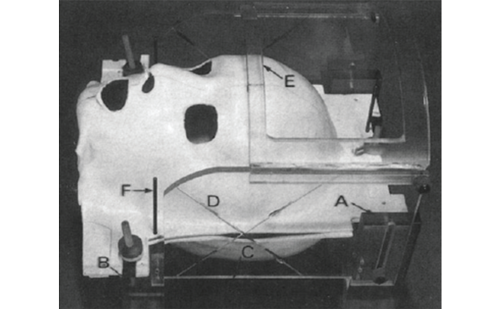
Trending Topic
Intracranial radiosurgery, no matter the means or methods of administration, is predicated on a core set of principles, including head immobilization and precise delineation of the treatment target. For some five decades after Leksell introduced the concept of stereotactic radiosurgery in 1951,1 rigid head fixation via an invasive device was an integral component towards these ends. […]
Journal Archive
European Neurological Review is a peer-reviewed, free-to-access, bi-annual neurology journal comprising review articles, case reports, practice guides, theoretical discussions, and original research. It features balanced and comprehensive articles written by leading authorities, addressing the most important and salient developments in the field of neurology in practical terms.
Latest articles videos and clinical updates - straight to your inbox
Log into your Touch Account
Earn and track your CME credits on the go, save articles for later, and follow the latest congress coverage.
Register now for FREE Access
Register for free to hear about the latest expert-led education, peer-reviewed articles, conference highlights, and innovative CME activities.
Sign up with an Email
Or use a Social Account.
This Functionality is for
Members Only
Explore the latest in medical education and stay current in your field. Create a free account to track your learning.


